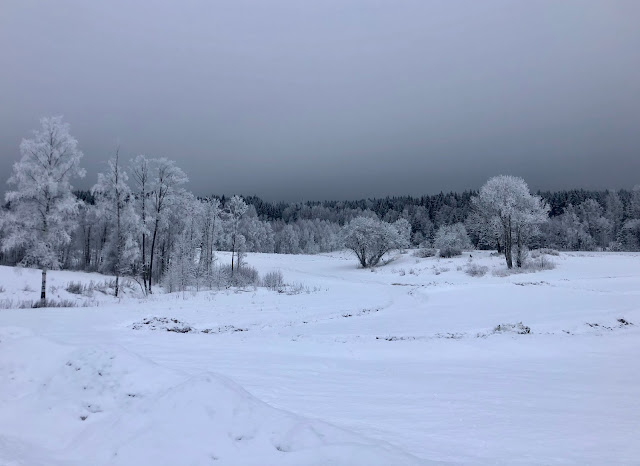On Wednesday I had that much anticipated and rarely occurring
event that is an Oslo tick. Never-the-less it didn’t leave me feeling in an
especially celebratory mood because the views were not that great and the
photographic evidence leads much too be desired. The bird in question was my
first Oslo Brunnich’s Guillemot. This is a species that breeds in the far north
of Norway but is a very infrequent sighting anywhere in the country away from
the breeding sites as its wintering areas are far out in the Arctic Ocean. On
Wednesday the fjord was very calm off Huk, Bygdøy and lots of ice had formed.
The result was that birds were easy to see on the sea and also concentrated in
a smaller area than normal. The recent southerly winds had pushed in quite good
numbers of Guillemots which were now easily outnumbering the Razorbills which had
previously (and unusually) been the commonest auk this winter. Most of the auks
were resting in small groups on the open water but a few were feeding on their
own amongst the ice. One of these birds, and a relatively close one,
immediately caught my eye as it had a lot of black in the face. I had already
noted an adult Guillemot in summer plumage (most of the birds that get pushed
in are immatures that do not acquire summer plumage) but this bird was
different. It was a stubbier, more angular bird than a Common Guillemot and
seemed to have cleaner, white flanks. This was interesting and my thoughts went
immediately to Brunnich’s. I cranked up the magnification on the scope and
immediately felt able to confirm that it was one even though range and lighting
were not the best. I could just about make out the diagnostic white line over
the short bill but in the only picture I managed that shows the bird in any way
that might approach a record shot it is not visible. It started diving and
swimming away from me and joined a small group of Common Guillemots on the open
water. This group contained an adult in summer plumage and he Brunnich’s was
clearly separable even at long range due to its different jizz with a shorter
bill and more angular head. Also the white flanks (lacking obvious barring)
were visible.
So, a tick but not of the “here look at my great picture of
it” variety.
In Maridalen Brambling was a new bird for the year and the
Grey-headed Woodpecker turned up again after an absence of 3 weeks or so and
finally showed in nice sunlight. I also saw my first Green Woodpecker of
the year (had previously only heard them calling) with a “singing” female. With
all the snow I have been looking for mammal tracks in the snow. I have seen
numerous Moose and Roe Deer, Red Squirrel, Beaver, presumed fox and Pine
Marten. Pine Marten is a species I have only ever seen once but I think is a
reasonably common species around Oslo and perhaps even in the city.
 |
| Brunnich's Guillemot (polarlomvi)... |
 |
| Maridalen's female Grey-headed Woodpecker (gråspett) with the red feathers in the crown is still here |
 |
| and a female Green Woodpecker (grønnspett) |
 |
| my first Brambling (bjørkefink) of the year |
 |
| and some Bullfinches (dompap) which seem to be very numerous this winter |
 |
| tracks of Pine Marten (mår) |
 |
| and droppings |
 |
| and some random shots of Maridalen in the snow |












No comments:
Post a Comment